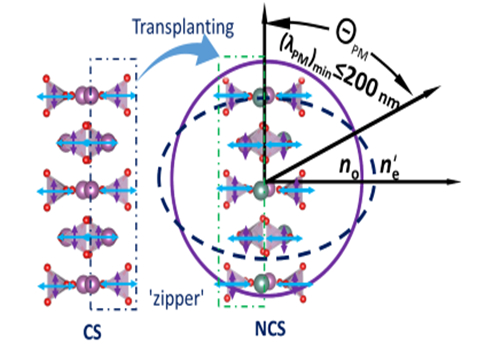The rapid increase in computational power of current supercomputer architectures and great advances in first-principles calculations enable scientists to discover materials with desirable properties in enormous data repositories by high-throughput computational materials design, creating novel compounds with required characteristics via crystal structure prediction or learning from data directly. Nonlinear optical (NLO) materials for generating infrared (IR) or ultraviolet (UV)/deep-UV coherent light are in great demand and attract much attention for their potential applications in laser micromachining, material-processing, photolithography, optical measurements, and manipulating entangled photons.
Recently, the research group lead by Prof. Pan have designed a series of rare-earth phosphates with appropriate birefringences, large band gaps, moderate SHG responses, and easy to obtain large size crystals base on structure-property relationship of deep-UV NLO materials. For phosphates, the main obstruction is small birefringence. The researchers proposed a semi-empirical model to calculate the birefringence of materials and evaluate the contribution of groups. Eventually, with the approach, a functional module which controls the optical anisotropy in phosphates were discovered. Then, a series of phosphates with large birefringence were designed. Of these new compound, one became the first phosphates which meet the deep-UV materials criteria and shortest phase-matching deep-UV wavelength in existing phosphates. This work have been published in Journal of The American Chemical Society and featured in cover. (J. Am. Chem. Soc. 2018, 140, 10726). This work is supported by the National Basic Research Program of China, the National Key Research Project and so on. 
Figure 1. The design scheme |
